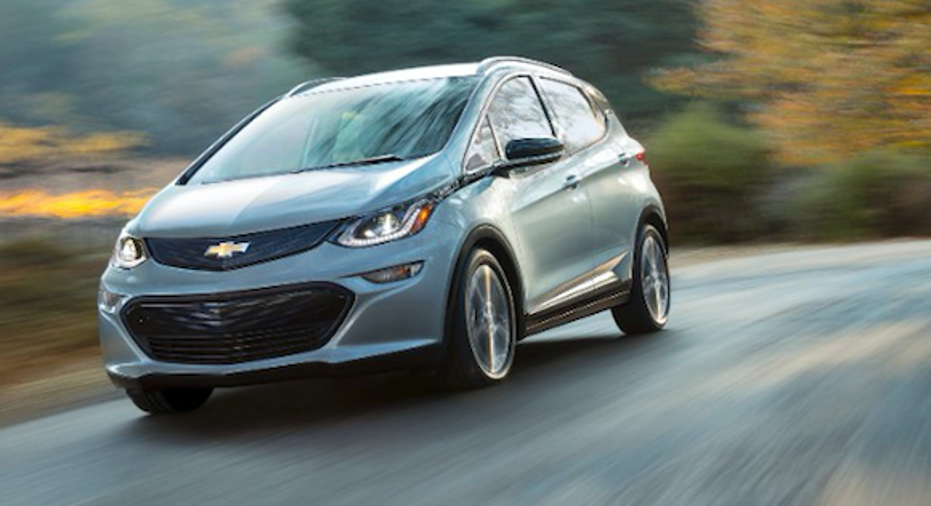The Great Irony of Compliance Cars

2016 Focus Electric is a perfect example of a compliance car. Image source: Ford.
When it comes to alternative fuel vehicles, many traditional automakers really don't want to play ball. Instead, regulators must drag them kicking and screaming, forcing their hand with different types of emissions regulations or requirements to produce a certain volume of alternative fuel vehicles. Most recently, California amended its ZEV mandates to require that 15.4% of an automaker's fleet must be ZEV by 2025 (12 states have similar mandates).
The tension between auto OEMs and regulators has persisted for decades for this very reason. Emissions cheating scandals have been around forever; Volkswagen's Dieselgate is just the latest and greatest.
Compliance, schmomplianceYou can tell that an automaker doesn't have its heart in the alternative fuel game when its strategy revolves primarily around compliance cars: vehicles designed only to meet tightening regulations and nothing more. These vehicles are only sold in the states where the company is required. Some are even explicitly production limited.
Ford is still playing the compliance car game for now, only selling the Focus Electric in limited markets currently. Ford did recently commit $4.5 billion to EV development over the next five years, so there's light at the end of the tunnel.General Motors is very much getting out of the compliance car mind-set; its original EV1 was the quintessential compliance car but the forthcoming Bolt is truly positioned as a mass-market vehicle, including availability. Fiat Chrysler is unapologetic, directly saying it only wants to sell the minimum.
Chevy Bolt is definitely not just another compliance car. Image source: GM.
By virtue of the distribution model, automakers that only make compliance cars send a clear message that they only want to sell the absolute minimum volume required to comply with the regulations, perhaps supplemented by buying ZEV credits from other manufacturers. Customers that have genuine interest in these vehicles but live in different markets are fresh out of luck. This leads to a bogglingly ironic situation where an automaker is making an alternative fuel vehicle that consumers might demand but the automaker won't sell it to them.
This historical unwillingness to take alternative fuel vehicle development truly serious is precisely what's given Tesla Motors an opening. Tesla has long sold its excess ZEV credits to peer OEMs. While Tesla develops compelling EVs (at high prices), most compliance cars fail to excite the average consumer due to low range and acceleration, even if the price is right.
From the automaker's perspectiveImagine for a moment that you're a large automaker being forced to make alternative fuel vehicles, but you really don't want to. You minimize the costs of development and production, which would include using an existing vehicle platform instead of building a new one.
Your goal is based primarily on alternative fuel vehicle unit volumes since that's how the regulations are written, so you try to price the vehicles as affordably as possible with the hopes of spurring unit sales instead of revenue growth. But since development and production costs are still quite high, you're still going to lose money after everything is said and done. So the goal is to meet the mandates while attempting to minimize operating losses associated with the cars. It's adhering to the letter of the law, while running over the spirit of the law with an Escalade.
However, there's another great irony associated with the strategy of only selling the bare minimum number of compliance cars.
Just because we need operating leverage doesn't mean we want itFor an industry that's so highly attuned to operating leverage and volume requirements (companies closely monitor and estimate breakeven levels based on unit volumes), this should all be painfully obvious.
Thanks to operating leverage, companies generally see margins expand as revenue increases, since it spreads the fixed costs over a wider unit base even as variable costs scale with volume. The net result is declining total average cost. Average costs are high at low volumes, so the key is to grow unit volumes in order to achieve these per-unit cost reductions. In the context of the auto industry and its infamously high fixed costs, operating leverage is incredibly important.
Fiat Chrysler CEO Sergio Marchionne noted last year that the electric Fiat 500e was losing $14,000 per unit, which is why he begged consumers not to buy it. The irony is that by minimizing unit volumes, Marchionne is maximizing the average loss per unit. To be clear, increasing volumes here does lead to greater short-term operating losses in absolute terms, but the long-term focus should be on average unit costs because that's more important to the product's overall viability over time.
With that type of strategy in the context of developing any new technology, it becomes incredibly difficult to ever recoup the R&D investments. This is one reason why Tesla investors are so patient: They realize how expensive it is and how long it will take to become profitable.
The article The Great Irony of Compliance Cars originally appeared on Fool.com.
Evan Niu, CFA owns shares of Tesla Motors, andhas the following options: long January 2018 $180 calls on Tesla Motors. The Motley Fool owns shares of and recommends Ford and Tesla Motors. The Motley Fool recommends General Motors. Try any of our Foolish newsletter services free for 30 days. We Fools may not all hold the same opinions, but we all believe that considering a diverse range of insights makes us better investors. The Motley Fool has a disclosure policy.
Copyright 1995 - 2016 The Motley Fool, LLC. All rights reserved. The Motley Fool has a disclosure policy.



















